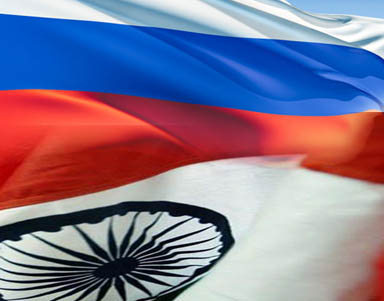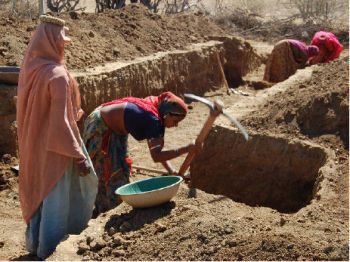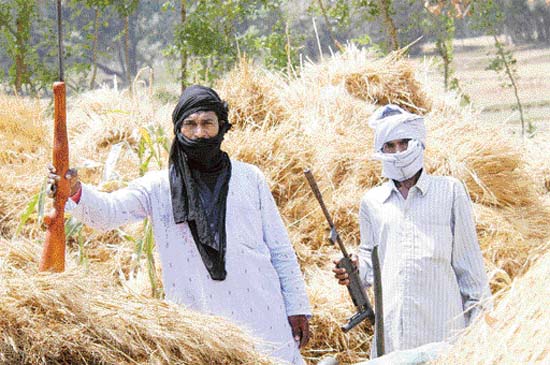The conferment of Nobel Peace Prize for 2009 on Barack Hussein Obama, the US President has triggered a debate across the world that whether it is a premature decision or it is a wrong decision altogether. Many news channels and newspapers have started online voting on this issue. Prior to Obama, three US Presidents, one after retirement and two in the office have also been awarded this prestigious and perhaps the most coveted and recognised award, they are Theodore Roosevelt in 1906 and Woodrow Wilson in 1919 and Jimmy Carter in 2002. But in none of the case did controversy and public interests arise to such a magnitude.
The decision was so unexpected and surprising that even Obama himself, who was in sound asleep in White House was made to awake to break this news on him, was astonished on the decision. Although diplomatically, he reciprocated with words like ‘Humbled and Honoured’, it was not easily palatable to him also; it was like a pleasant dream for him.
The decision of Norwegian Nobel Committee, which was established in 1901 by Alfred Nobel, the ‘Inventor of Dynamite’, the explosive, presently comprising of five eminent people from Europe and headed by Thorbjorn Jagland, the former PM of Norway, to award Obama was not an easy task because a all time record 205 nominations were on the board, including persons like Morgan Tsvangirai of Zimbabwe and Chinese dissident Hu Jia, Martti Ahtisaari etc.
WHAT OBAMA HAS SO FAR DONE FOR PEACE- Many people including some think tanks and world leaders are asking that what Obama has so far accomplished? Walesa, the former President of Poland and himself Nobel Peace Prize winner also openly criticized this decision by saying that Obama has so far accomplished nothing.
People say that Obama has opened many fronts in international diplomacy of course, but results or logical conclusions of these ‘back or front door diplomacies’ have not yet come. He has been desperately trying to solve vexed and seemingly unending ‘West Asia problem’ and has appointed ‘George Mitchell’ as special envoy to initiate dialogue with warring factions including Hamas on the one hand and Israeli government on the other. The victory of Benjamin Netanyahu in Israel has made Obama’s task only difficult as former has openly but diplomatically not accepted Obama’s ‘two Nation and Stop Settlement theory’. The famous ‘Cairo Speech’ of Obama which stirred hornest nest in the Muslim world and was termed as Obama’s bold and farsighted effort to avert the imminent ‘Clash of Civilisations’ as propounded by Samuel Huntington. Obama wanted to end or at least mitigate this hatred in the Muslim world for Americans in particular and European in general, a grotesque legacy which both senior and junior George Bush had left for him. Although, a lot more is required to be done both by the international community and Obama in this regard, a humble beginning was definitely made by Obama, for which he rightly deserves appreciation. At least, he could muster courage and showed political sagacity and diplomatic audacity to accept that America has done some wrongs, for which time has arrived to mend ways and rectify and nullify the wrongs done.
On Afghanistan, Obama’s policy is yet to take definite shape and yield results. By appointing Richard Holbrook as special envoy for Afghanistan, he sent signal to the world community, especially the Muslim world, that he is all set to change the old stereotypes and colonial mindset towards South-Asia. Although by the time Obama could arrive at White House, huge collateral damage had been done both in terms of man and money. Many American politicians and many security experts also including Stanley A. McChrystal, the chief of NATO forces in Afghanistan say openly now that America and West is fighting a lost war in Afghanistan. McChrystal in a 66 pages report has demanded 40,000 more troops in Afghanistan; otherwise, he said, US will lose the war. This report has shaken confidence security and defence establishments including Pentagon. Joe Biden in not in favour of sending more troops and Obama is not yet made up his mind, which way he will go. It is not possible for him either to eschew or to end the war abruptly and abjure attacks on Taliban and Al-Qaeda.
The USA is to decide and choose between devil and the deep sea. Eight precious years and loss of billions of dollars has brought for America only causalities, defame and injuries. Obama has to overcome from this; a huge and stupendous task of finding an amicable but lasting solutions. The hope generated during Afghanistan election also is going to be a fiasco. But so far Obama has been able to play very cautiously and intelligently and he requires consistency as well as continuity in this regard and this award is definitely a prize and a go ahead signal for him.
As far as Nuclear disarmament and arms race are concerned, Obama has taken bold and decisive steps. Although, it is premature to give him a certificate of victory or accomplishment, a beginning is made, the process has been incited, which had been in hibernation for a long time. The controversial ‘Europe Missile Defence plan’ has been abandoned by Obama, a decision which was very difficult to take under the prevailing politico-strategic global environment. By doing so, Obama has tried to lessen the tension with Russia, the arch rival even after losing its superpower status.
Even during Georgian crisis, which led to establishment of South Ossetia and Abkhazia as independent nations, Obama maintained ‘outstanding restraint’, a posture which was unheard of during recent times by White House.
In UN General Assembly session, Obama’s initiative brought CTBT and NPT again on international agenda. In recent times, both these treaties had been put into ‘mode of pause’. The Nobel Committee must have taken into consideration these aspects also before taking a final decision on this issue. The US’ posture of ‘ready to take on those who dare to challenge’ has been bid good-bye by Obama. He repeatedly utters ‘conciliation and not confrontation’ and advocates for ‘peaceful co-existence’ rather than dominance. These are some of the steps taken by Obama, which has definitely ushered in a new era of difference, for which Obama must be encouraged.
The experience of ‘policy of economic and military sanction’ has been proved disastrous and has done more harm than good. This perhaps due to this mindset, Obama did not act the manner his predecessors would have acted with North Korea and Iran on their defiance of international opinion by test firing N-Missiles etc. He is trying to end economic sanctions of Myanmar also, but not unilaterally but by taking into confidence Suu Kyi also.
Last but definitely not the least is the decision of release of hundreds of detainees in Guantanamo bay. Though it was criticised by many including his compatriots, Obama did not hesitate and took a historic decision to show that he really cares for all what he says. The results in terms of prevail of good will in the Muslim world is still a distant dream, but Obama has tried to undo many wrongs which has been done by his predecessors including George Bush, the junior.
Thus there is no denying the fact that Obama’s actions have yet to be translated into achievements, his efforts are inculcated with sincerity and honesty for which he must be praised and suitably rewarded. And Nobel Prize for peace was definitely the best available option for the Nobel Committee.
However this award will ever be remembered for making a departure in the sense that all previous Nobel Prizes had been conferred for ‘What has been done’ but this year’s award perhaps for the first time has been given for ‘What is to be done’. Perhaps due to this departure, even chairman of the committee Thorbjorn Jagland also said ‘If you look at the history of the Peace Prize, we have on many occasions given it to try to enhance what many personalities were trying to do’ he added ‘It was because we would like to support he is trying to achieve’. The message clear; Obama has been awarded for what he is to do and not what he has done.
















